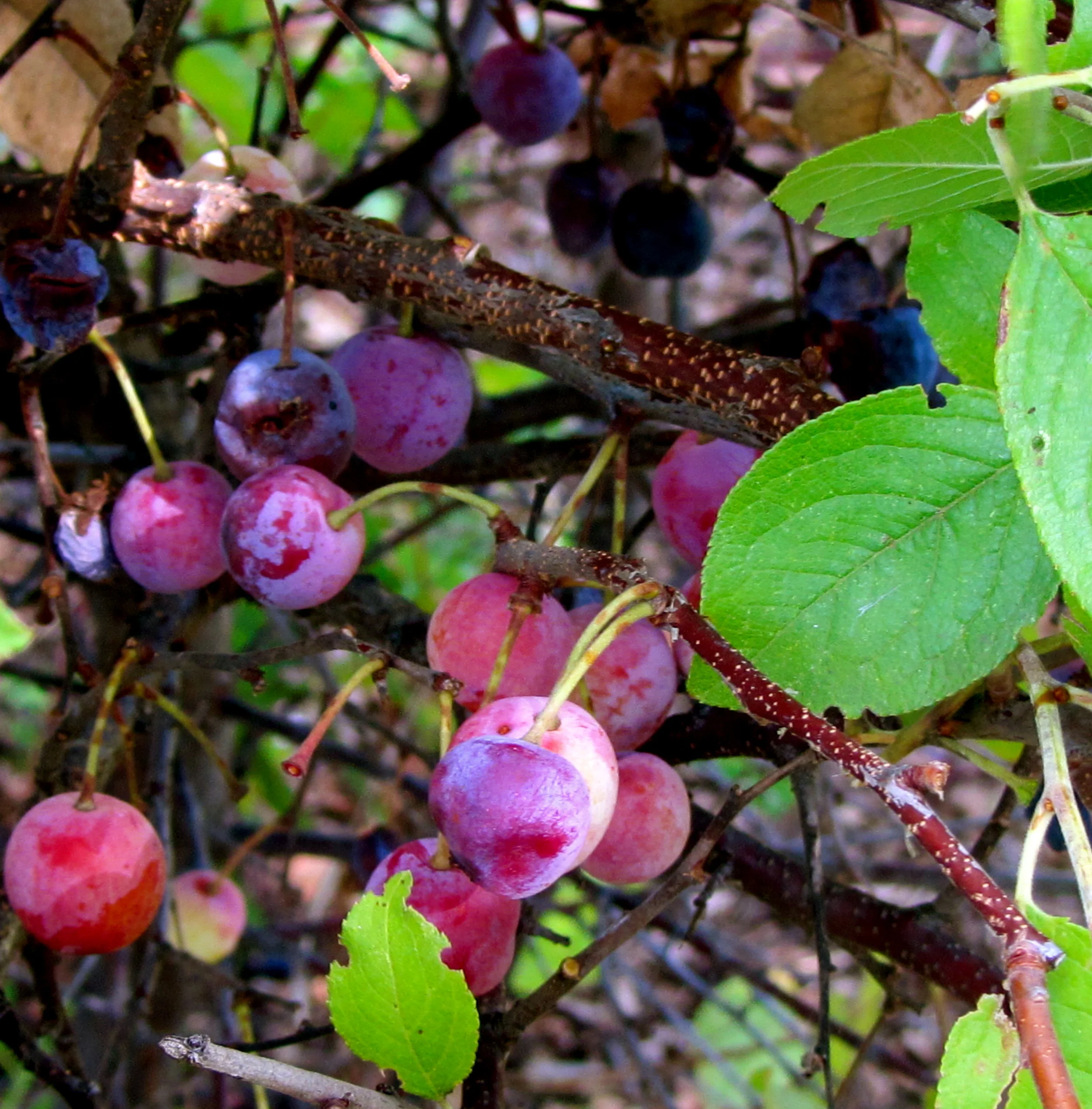My childhood memories of snacking on rose hips, the only berries around in winter, are that they were a delightful trail nibble, with a texture like raisins. It would be decades before I understood that rose hips are a free source of vitamins and a versatile wild food source.
After the wild roses have lost their blossoms, the bright red berries, called rose hips, can be harvested fresh in autumn or dried, actually freeze dried in winter. Rose hips contain more Vitamin C than citrus, and are also rich in Vitamins A, D and E.
Rose hips naturally freeze dried by winter
The fine hairs and seeds in fresh rose hips are not only an unpleasant texture, but it can also irritate the mouth. I wait for Nature to do the work of freeze drying rose hips. One night of below freezing temperatures turns rose hips into a delicious wild food. This is another situation where knowing when to harvest is the difference between having fun and doing chores. The easiest way to enjoy winter gathered rose hips, besides simply snacking on them, is to make tea.
One note about cooking with rose hips: I only use cast iron cookware, but if I had aluminum pots, I would not use them to prepare rose hips, because aluminum destroys the Vitamin C.
When it comes to any kind of berry, different individual bushes produce different tasting fruit. When I find a rose bush with wonderful tasting rose hips, I'll harvest the berries from that bush. Once home, put a pot or kettle of water on the stove and clean any twigs or other items from the the rose hips. When the water comes to a boil, remove it from the heat. Use 2 teaspoons of dried rose hip per cup of boiling water and steep for 10 to 15 minutes. After making tea, push the rose hip pulp through a strainer, add olive oil or butter and enjoy as a side dish.
Timeline
1-2 Hours Before:
Harvest rose hips
20 Minutes Before
Put water on to boil
Clean and sort rose hips, removing any stems.
15 Minutes Before:
Remove water from heat and steep rose hips
Serve
Shopping List
Foraged items:
Dried rose hips two teaspoons per cup of tea
Pantry:
Honey, sugar or other sweetener for tea
Olive oil or butter for side dish
Pot or kettle to boil water
Strainer




